8 classic BB King albums you need to hear
We celebrate the legendary bluesman's greatest recordings
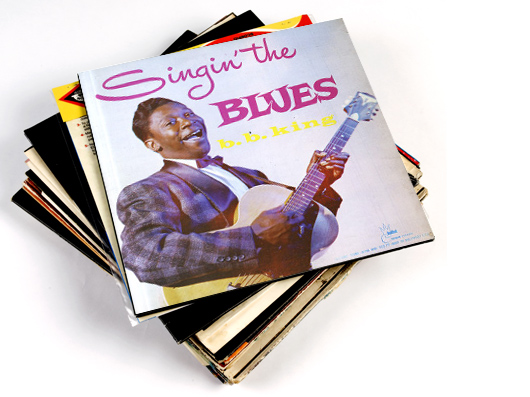
Singin' The Blues
They say that the first cut is the deepest, and that certainly proved true for BB King’s inaugural LP, although his career as a recording artist actually began seven years previously with the single Miss Martha King, one of four tracks recorded in Studio A at the WDIA Radio Station in Memphis, Tennessee in 1949.
The whole concept of the ‘album’ was comparatively new - until then what we now call singles were the chosen medium for popular music releases. But by the mid-1950s the public’s thirst for recorded music had expanded into the up and coming teenage market, something that had exploded with the birth of rock ’n’ roll around that time.
By the time of Singin’ The Blues’ release, BB was already an established radio personality, as well as a seasoned live performer. The whole album represents something of a manifesto for what was to come.
The cover shows BB decked out with a plaid black and white dinner jacket, a white-on-white shirt and bow tie, setting a dress code that was to become something of a trademark in later years. Previously, he had taken to the stage wearing whatever came to hand, which often meant Bermuda shorts or an old army shirt!
The track listing on the album could almost be a classic BB King set list: songs such as You Upset Me, Baby, Every Day I Have The Blues and 3 O’Clock Blues all smoulder and spark, setting the stage for what was to come.
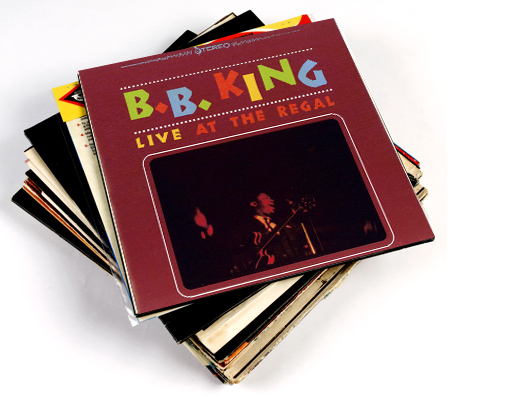
Live At The Regal
It’s commonly thought that unless you’ve seen him play live, you haven’t really enjoyed the full BB King experience. It was certainly this seminal live album that proved to be something of a breakthrough on its release in 1965.
Recorded at Chicago’s Regal Theatre on 24 November 1965, Live At The Regal is considered by many to be one of the best blues albums of all time. Its presence in the National Recording Registry at the Library Of Congress certainly gives an idea of how highly the recording is regarded.
By 1965, BB had made the road his home, but his popularity was still limited very much to the black blues market - in fact, the Regal Theatre itself was known as a ‘black theatre’, as audiences were still pretty much segregated in those days.
BB had played The Regal on “hundreds of occasions” prior to when this recording was made at the instigation of arranger and producer Johnny Pate. BB felt that the time was right, as his band was tight and he had taken years to hone the set into an audience-friendly barnstormer.
At that point, the band comprised Leo Lauchie on bass, Duke Jethro on piano, Sonny Freeman on drums and Bobby Forte and Johnny Board on saxes.
The opener was Every Day I Have The Blues - something that was to become a BB King tradition - and the set included many more BB staples such as Help The Poor and Sweet Little Angel.
The critics loved it and hailed BB as something of a blues Messiah, but strangely the man himself was dismissive of the album, saying that he was sure that the band had played “hundreds of better concerts” prior to that night.
There’s little doubt that Live At The Regal did a lot for the bluesman’s popularity, albeit mainly among the black music fans. However, the record did manage to find its way across the Atlantic to the UK, where it was held in high reverence by the members of the burgeoning Surrey Delta guitar community. John Mayall, Eric Clapton and Peter Green have all cited this album as one of the most influential for them, but another breakthrough for BB King was a matter of only a few years away...
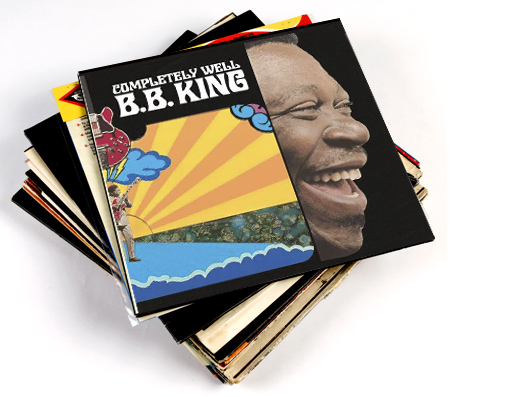
Completely Well
In 1968 BB changed managers. Up to that point he had been managed by Lou Zito, but his frustration with a life on the road playing the same old venues led him to Sidney Seidenberg.
Seidenberg had big ideas, one of which was to get BB playing to white audiences, and it was he who engineered BB’s now legendary debut at San Francisco’s Fillmore West. Long-haired white kids with T-shirts proclaiming peace and love queued around the block to see and hear The Fillmore’s owner Bill Graham’s ‘discovery’ - and they lapped it up. BB had begun the crossover to international esteem and, empowered by this, he recorded Completely Well.
Befitting BB’s new-found fame with a white audience, Completely Well was recorded using mainly white session musicians, the idea being that it would give the bluesman a more ‘international’ sound. The result enjoys some rough edges, especially when compared to the tight arrangements on Live At The Regal. But its immortality as a recording is guaranteed by the inclusion of the Rick Darnell and Roy Hawkins composition, The Thrill Is Gone, earning BB his first Grammy for best rhythm and blues vocal performance at the awards ceremony in 1970.
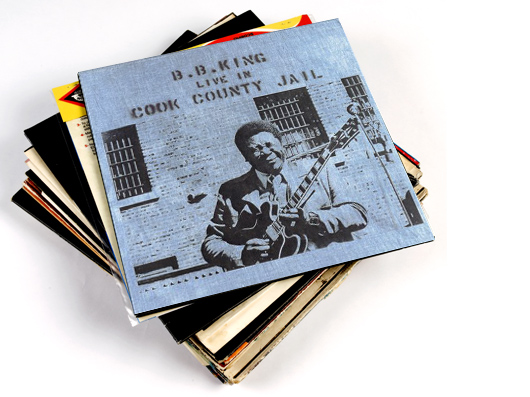
Live In Cook County Jail
It might surprise you to learn that BB King went been to jail on many occasions over the years - but only ever with a guitar in his hands and a band behind him!
It all started with this appearance at Cook County Jail, Chicago on 10 September 1970. The concert came about when BB was playing at Mister Kelly’s, a jazz venue in Chicago. There, he met a man called Winston Moore, an official at the jail, who asked him if he would perform for the inmates.
BB recalled the experience as being an uneasy one at first, but his forward-thinking manager Sid decided that the concert should be recorded for posterity. Playing in the prison yard in front of the inmates, the band delivers a tight set interspersed with cheers for the musicians on stage and boos for the prison officials when mentioned on mic!
The press leapt upon the novelty of a blues performer playing a prison and, as a result of publicly airing some of the inmates’ gripes about the prison system, some laws were later changed - something BB was very proud to have had a hand in bringing about.

There Must Be A Better World Somewhere
By the end of the 1970s music styles had radically changed, especially in the UK, where punk had broken, eventually giving way to foppish, guitar- free synth-pop and new romanticism.
According to the music press, everything pre-punk was somehow no longer valid, and it heralded in a tough time for more traditional music forms such as blues and jazz. In the US, the effects of the punk storm were less pronounced, and BB King’s work schedule remained the same as it had always been: new album, tour, new album, tour.
A new producer in the form of Stewart Levine managed to place BB in some novel musical surroundings, including an album with jazz rockers The Crusaders (Midnight Believer, 1978). Working with jazz musicians gave BB some new ideas for arrangements with his own band, some of which surfaced on There Must Be A Better World Somewhere, an album that went on to add to his growing collection of Grammys.
Later experiments weren’t perhaps quite so successful; compare the sumptuous blues of the title track here with the synth-orientated Michael Jackson-like first track on 1985’s Six Silver Strings (Big Boss Man) for instance.

Deuces Wild
Throughout the 1980s and 1990s, BB King albums appeared with unerring frequency. The Grammys were beginning to pile up, too, with no less than six awards between There Must Be A Better World Somewhere and this album, which proved to be something of a turning point for BB who, at the age of 72, was still spending more time out on the road than he was at home.
The idea behind Deuces Wild was a simple one: pair BB King up with some of rock and pop’s prime movers and shakers, stand back and watch the fireworks! This produced a stellar line-up with some genuinely spine- tingling moments. Van Morrison (If You Love Me), Bonnie Raitt (Baby I Love You), Dione Warwick (Hummingbird), The Rolling Stones (Paying The Cost To Be The Boss), David Gilmour (Cryin’ Won’t Help You, Babe) and Willie Nelson (Night Life) all contributed, and BB even tried his hand at rap by pairing up with Heavy D on Keep It Comin’.
What's more, the version of Rock Me Baby with long-time friend and number one superstar fan Eric Clapton probably sowed the seed for the ultra-successful Riding With The King that was to follow just over a couple of years later.
Deuces Wild went on to earn gold status in the US and platinum in Canada, but perhaps more importantly, it established BB firmly in the consciousness of more mainstream music buyers and not just blues fans.
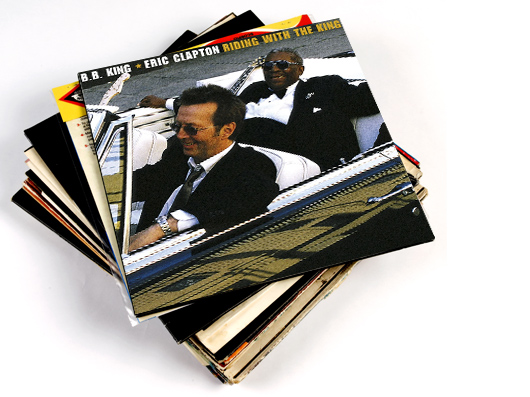
Riding With The King
An album festooned with awards, including the Grammy for Best Traditional Blues Album, the multi-platinum-selling Riding With The King was a marriage made in blues heaven for many fans. Even the critics threw superlatives around in its honour, although some claimed that the production was far too polished for a traditional blues album.
For years previously, BB and Clapton had guested at each other’s gigs, a tradition that had started back in the 1960s when Clapton was both a fan and something of a blues guitar god himself (check out the archive picture on the inner sleeve of the album, with a young and permed EC sitting next to a very slick-looking BB during an earnest duet!).
Having talked about recording together many times in the past and testing the waters on Deuces Wild, BB and Eric headed to the studios with a band made up from Clapton’s usual crew and top sessioneers such as drum champ Steve Gadd and bass lord Nathan East. As the album appeared at a time when Clapton could do no wrong in the eyes of either fans or critics, Riding With The King could easily have been mistaken for one of EC’s own LPs, with BB as the illustrious guest star. Certainly, Clapton’s pristine production (along with co-producer Simon Climie) would seem to suggest this; but the guitar playing, solos and vocals are shared equally between the two blues superstars.
It has to be remembered also that Clapton’s previous attempt at producing a ‘blues only’ album under his own name, with 1994’s From The Cradle, didn’t create anything like the tremors that Riding With The King did just six years later. The material, allegedly hand-picked by Clapton, bestrides the blues canon, with tracks such as Key To The Highway, Help The Poor and Worried Life Blues all enjoying new life in the hands of the two seasoned bluesers.
The album art, which shows Clapton and BB together in an open-topped Cadillac, caused many to think that the title track must have been penned specifically for the CD, but it was in fact written by John Hiatt for his album of the same name in 1983.
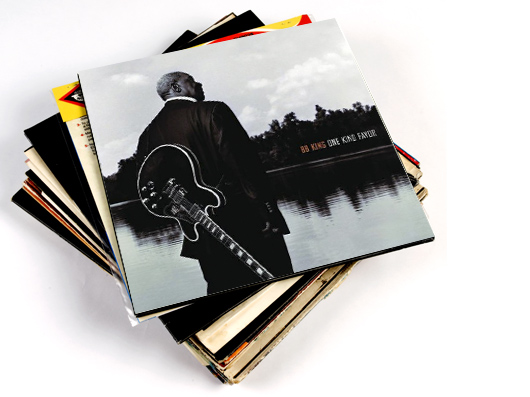
One Kind Favor
BB King’s 24th studio album - and another Grammy winner - gave no indication that the great man was slowing down, although perhaps the first track, Blind Lemon Jefferson’s See That My Grave Is Kept Clean, hinted that he might have had an eye on his own mortality. In contrast, the blues classic Sittin’ On Top Of The World also makes an appearance here.
Two years before the album's release, BB had played in the UK and Europe in what was dubbed a ‘farewell tour’. Now in his eighties, he considered that he might be too old to endure long Transatlantic flights, although his US tour schedule was still as gruelling as ever.
On that 2006 outing he was supported by Gary Moore, the two having collaborated in concert together previously during Gary’s blues renaissance of the 1990s, becoming firm friends in the process.
The farewell turned out to be premature, as BB appeared in the UK once more with John Mayall in 2009, telling fans that he had never said that his farewell tour would actually be his last! In any case, his appearance at 2011’s Glastonbury Festival confirmed that any farewells were definitely premature.

